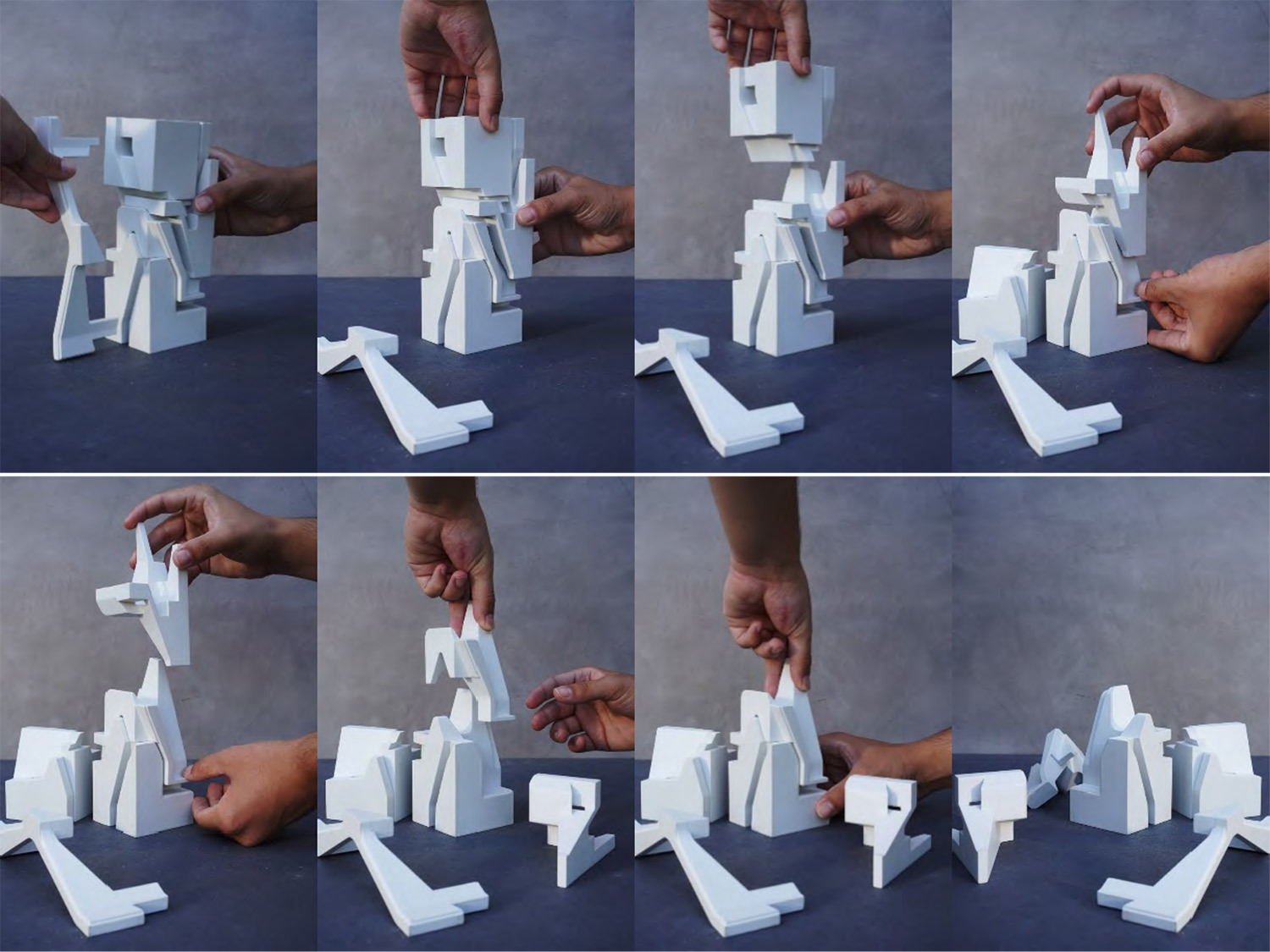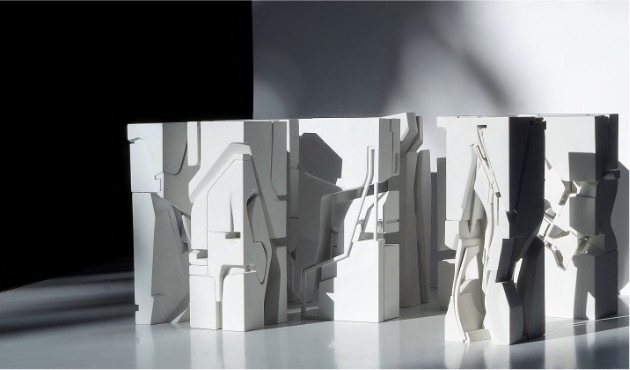Spring 2024 Vertical Studio Presentations Propose Material, Environmental Pursuits

This year’s vertical studio presentations for spring 2024 at SCI-Arc launched a fresh batch of faculty-led briefs for an engaging range of conceptual, architectural pursuits. At the opening of the semester, in its biannual tradition, the school convened students from across all undergraduate, graduate, and postgraduate programs to learn about and choose from a wide selection of courses offered during the renowned vertical studio lottery.
Across the academic year, mixed groups of students from all programs are able to participate in design studios led by SCI-Arc’s accomplished faculty while they engage novel problems of space proposed in concert with other disciplines from the environmental to the political to the material, to art and fashion, film, and more. Throughout the term, vertical studios provide an avenue for students to gain unparalleled experience working with not only accomplished faculty from SCI-Arc but visiting architects, artists, theorists, and experts from various related field to develop an architectural project.
Upon conclusion of the studio presentations, students made selections in order of preference, and were then sorted using an algorithm based on grade point average.
This spring’s vertical studio presentations featured a stacked list of options, including but not limited to A Series of Puzzling Events, led by Jenny Wu, which considers that “one of the more inescapable realities of realizing buildings is the assembly of parts.” The studio, especially interested in articulating methods of assembly that allow for a transference between types and scales, three-dimensional puzzles exemplify a way of exploring the issues of assembly that upset the typical methods of developing an architectural project.
“Over the past few years, I've been very interested in this threshold of recognizability, or the lack thereof, of how that might allow for some looseness in its part-to-whole relationship,” Wu wondered in her presentation. “For example, how much void can the primitive hold before it no longer reads as a whole?”

Imprints, a studio presented by Florencia Pita, proposes that as a noun, an ‘imprint’ is “an action on a material object that can be coded with markings and textures.” As a verb, the ‘imprint’ will aim to have an effect, “one that goes beyond the material qualities so the architectural space can leave a lasting impression.” While these impressions can refer to images or figures, they might be illustrations that are actually remembrances of things. For the studio, the ‘things’ in question will be views of nature, from photographs to paintings, from which students will extract textures and re-calibrate them so they can become architectural.
In traveling to Mexico, with its lush with nature, parks, trees, patios, etc., studio participants will engage a notion of urban nature by connecting the landscape with the architecture as a mixed-use building proposal combining housing, cultural, and commercial elements.
Joy Day’s studio offering, CODA_PLEX: A New Genre (of) Cinema, claimed to take up a variety of the challenges cinema poses for architecture, “both in practical terms—by providing new armatures for cinematic experience—and in conceptual terms, by developing new architectonic responses to an increasingly ‘filmic’ contemporary urban condition.” CODA_PLEX, Day explained, will delve into the cinematic, investigating how the multiplex’s modernist and generic nature needs recasting in the face of streaming platforms and a host of unanticipated cultural and civic demands.
“I think my fundamental interest as an architect is in how architecture orchestrates vision, how we're able to kind of shape space and circumstances so that people see things anew and differently,” he shared. “[This vertical studio] will be a dialogue that explores this question of whether cinemas have run their course after 150 years. And if so, how can we reinvigorate this experience for a new era?”
The Natural Studio proposed by Gordon Kipping will seek to confront the present problem of climate change, challenging students to change how we build and what we build in an effort to help ameliorate environmental collapse. The studio will start by dividing students into four groups, each assigned respectively to a material: wood; unfired clay masonry units; rammed earth; and reclaimed cut stone. After an intensive two-week research period, each group will source out their respective materials, process them as necessary and construct a 12 inch by 12 inch by 6 foot tall column in the studio. In the final weeks leading up to midterm, students will explore construction in their respective materials through the conceptualization of a typical building module. “According to the World Economic Forum, buildings account for over 40% of carbon dioxide emissions, taking into account both building materials, construction, and operating. And carbon dioxide emissions are the leading cause of climate change,” Kipping said. “The point being: changing the way we build and with what we build can have a huge impact to mitigate climate change.”